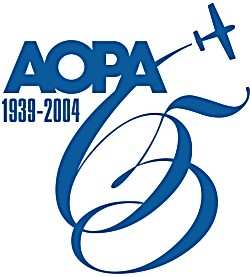AOPA To Help TSA Fix Citizenship Validation Rule
 The head of the TSA has made good on
a promise to AOPA members. On Wednesday Rear Adm. David Stone sat
down with AOPA President Phil Boyer and senior members of AOPA's
Government & Technical Affairs (GTA) staff. The purpose of the
meeting: Get AOPA and TSA working together to ensure that security
concerns can be met without imposing onerous or ineffective
regulations on general aviation.
The head of the TSA has made good on
a promise to AOPA members. On Wednesday Rear Adm. David Stone sat
down with AOPA President Phil Boyer and senior members of AOPA's
Government & Technical Affairs (GTA) staff. The purpose of the
meeting: Get AOPA and TSA working together to ensure that security
concerns can be met without imposing onerous or ineffective
regulations on general aviation.
"It makes no sense for TSA, with all of its security knowledge,
and AOPA, with all of its knowledge of GA, to not work together,"
Boyer said at the meeting. "That's obviously the best, most
effective way for us to achieve our common objectives of a safe
country and a healthy and growing GA community."
Stone committed to the meeting two weeks ago in responding to a
withering barrage of questions from some of the 1,200 AOPA members
who attended his presentation at AOPA Expo in Long Beach,
California. Many of the questions centered on the so-called alien
flight training/citizenship verification rule that imposes a whole
range of requirements on pilots seeking training and their flight
instructors.
"The GTA staff has made solid inroads on amending and clarifying
this rule," said Boyer. "But what we really need to do is back up
from the details and get a macro understanding of what the TSA is
trying to accomplish. And then put the unique resources of AOPA to
work to help them do it." TSA has recently tried to amend the rule
with piecemeal changes, such as exempting those involved in glider
and hot air balloon training from the rule's requirements.
Item one for Wednesday's meeting was to allow TSA to explain the
underlying risks the rule was intended to eliminate. TSA is
operating under a congressional mandate to increase security
related to flight training and authenticate any foreign
student.
Stone summed up the TSA's overall direction as making sure "we
never have a repeat of 9/11." His overarching question: "How can we
stop people from using flight training they receive in the US as a
weapon against us? We need to make sure it doesn't happen again."
At the same time Stone indicated a keen — and growing —
sensitivity to the need to protect the fragile flight training
industry, the key to all future aviation from GA to the
airlines.
Boyer and Stone discussed partnering to address three critical
areas in the rule: defining flight training, streamlining the TSA's
citizenship validation process, and simplifying the requirements
for flight instructors.
Under this cooperative model, TSA would clearly define the types
of flight training that the rule is intended to address, with AOPA
providing the detailed understanding of GA and guidance on
developing and implementing the program. AOPA wants to take a
similar approach to streamlining the citizenship validation process
in order to minimize the impact on current pilots — both US
citizens and resident aliens.
For the nation's 88,728 flight instructors, AOPA is seeking
immediate relief from the confusion and burdensome requirements of
the existing rule. "There are more than 3,400 flight schools in the
United States," noted Boyer. "Concern and confusion currently
reign. Our recent survey indicated only one in 10 schools was aware
of the rule. We cannot expect these people to abandon their
businesses to become agents of the government by certifying
applications and photographing alien students."
"Let me caution those immediately affected by the October 20
rule: This is not going to happen overnight," continued Boyer. "We
will work aggressively with the TSA to fix the rule, because right
now it's in chaos. We recognize that it's not going to be a quick
fix, as the TSA needs to comply with the congressional mandate that
'made them do this.' And it is possible that AOPA will need to go
back to Congress in January to obtain relief from the restrictive
language.
"This meeting was the needed start to put things back on track.
We look forward to an effective partnership with Adm. Stone and his
organization."
 ANN's Daily Aero-Term (12.04.25): Cooperative Surveillance
ANN's Daily Aero-Term (12.04.25): Cooperative Surveillance ANN's Daily Aero-Linx (12.04.25)
ANN's Daily Aero-Linx (12.04.25) NTSB Prelim: Extra Flugzeugproduktions EA 300/SC
NTSB Prelim: Extra Flugzeugproduktions EA 300/SC Classic Aero-TV: The Bally Bomber - The All Time Ultimate Warbird Replica?
Classic Aero-TV: The Bally Bomber - The All Time Ultimate Warbird Replica? ANN's Daily Aero-Linx (12.05.25)
ANN's Daily Aero-Linx (12.05.25)



